Planning foundation work with an excavator? This guide will help you avoid common mistakes when constructing a foundation with an excavator and save up to 30% of your budget. We've compiled practical advice from operators with 20 years of experience, real cost calculations for excavator work on foundations, and proven methodologies. Let's start with the basics: how to choose an excavator for foundation work and organize soil excavation with an excavator without overpaying.
Types of excavators and foundation work
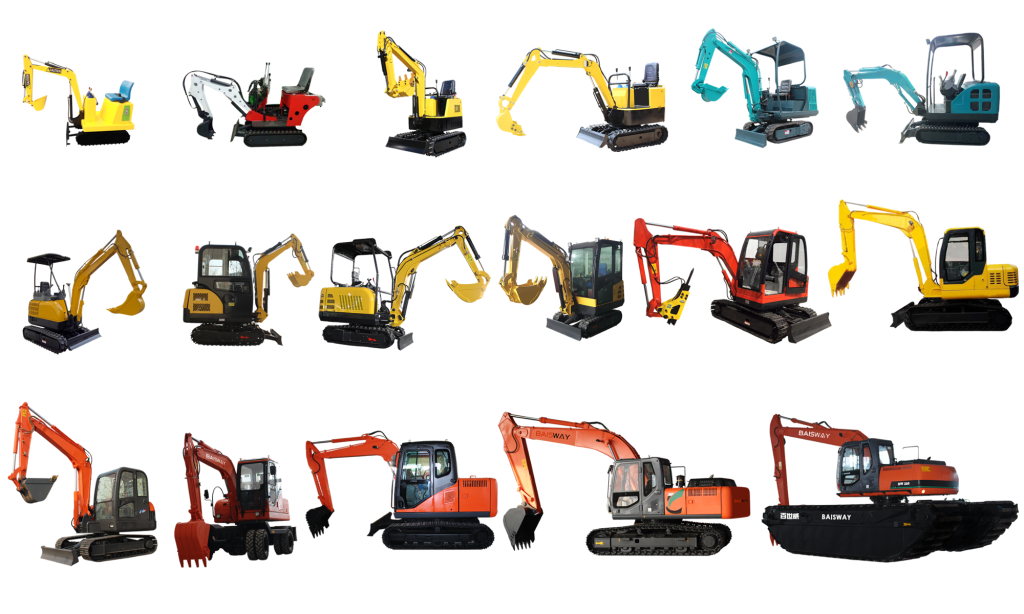 The correct choice of excavator for foundation digging determines the efficiency of all subsequent stages. Let's consider the main types of equipment for earthwork from a practical benefit perspective:
The correct choice of excavator for foundation digging determines the efficiency of all subsequent stages. Let's consider the main types of equipment for earthwork from a practical benefit perspective:
For quick decision-making about which excavator is best for foundation digging, use our comparison table. It takes into account real performance indicators and current excavator earthwork rates:
| Equipment type | Best suited for | Work speed | Average rental price | Excavator fuel consumption |
|---|---|---|---|---|
| Mini excavator (up to 5 tons) | Sites up to 10 acres, limited space | 15-20 m³/hour | $40-55/hour | 3-5 L/hour |
| Backhoe loader | Universal work, medium sites | 25-35 m³/hour | $50-70/hour | 6-8 L/hour |
| Crawler excavator (10-20 tons) | Large volumes, difficult soil | 60-80 m³/hour | $85-110/hour | 12-18 L/hour |
| Wheeled excavator | Mobile work, hard soil | 40-60 m³/hour | $70-90/hour | 10-15 L/hour |
Consider not only the excavator service price per hour but also productivity. Sometimes renting an excavator for foundation work with high productivity pays off due to the speed of work completion.
Site preparation for foundation and soil development with an excavator
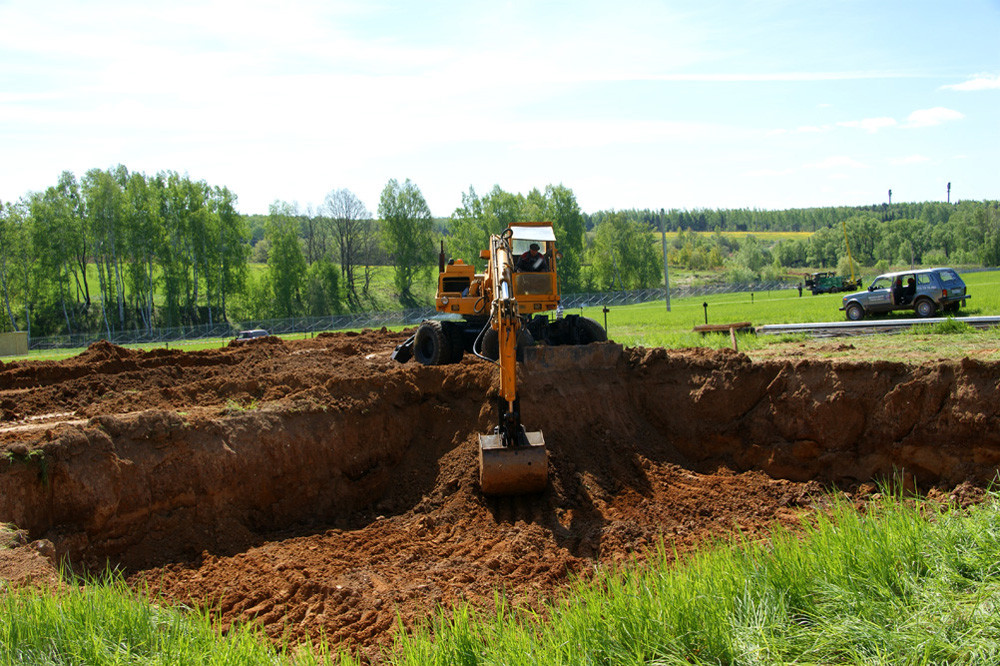 Before starting foundation earthwork, it's necessary to properly prepare the site. Here's a proven action algorithm for soil preparation with an excavator:
Before starting foundation earthwork, it's necessary to properly prepare the site. Here's a proven action algorithm for soil preparation with an excavator:
- Survey the site — check for underground utilities. Order an excavator call to the site only after coordination with gas service and water utility (usually free)
- Perform geodetic marking — use professional equipment for precise site planning with an excavator ($150-300 for the work)
- Clear the territory — remove debris, if necessary perform old foundation demolition, ensure access width of at least 3.5 meters
- Organize water drainage — create temporary drainage ditches to protect the future excavation from flooding
Pro tip: "Always allocate 15-20% of time for unforeseen situations when digging trenches with an excavator. In my practice, in 7 out of 10 cases, undocumented utilities are found or rock soil is encountered," — Michael Thompson, operator with 25 years of excavator operation experience.
Water drainage and drainage systems for foundations
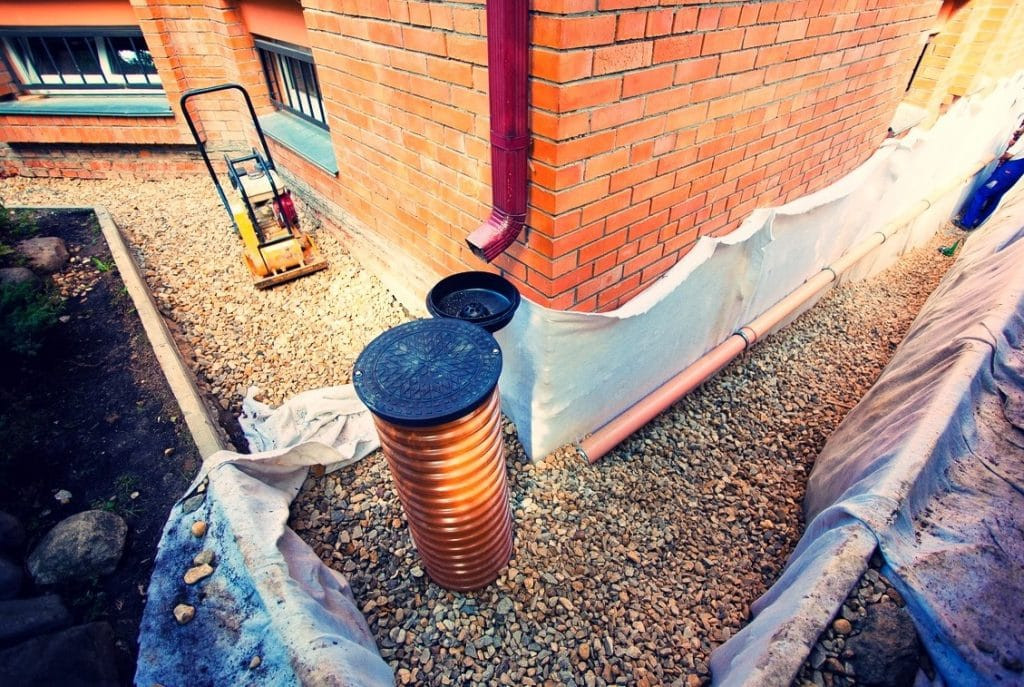 Proper organization of water drainage and foundation drainage installation is the key to successful earthwork. Ignoring this aspect leads to excavation flooding, soil erosion, and a 30-50% increase in foundation work costs.
Proper organization of water drainage and foundation drainage installation is the key to successful earthwork. Ignoring this aspect leads to excavation flooding, soil erosion, and a 30-50% increase in foundation work costs.
Temporary water drainage
When organizing temporary water drainage for excavation, the following elements should be provided:
- Surface drainage — ditches 30-50 cm deep around the perimeter with a 0.5-1% slope for rainwater drainage
- Water collection pits — depressions in excavation corners for water collection with subsequent pump evacuation
- Drainage pumps — 200-500 L/min capacity for effective groundwater pumping
These measures will prevent work zone flooding and ensure safe conditions for excavator work on site.
Permanent drainage system
With high groundwater levels, permanent foundation drainage installation is necessary. Main drainage system options include:
Wall drainage
- — perforated pipes along walls at foundation depth
- Ring drainage — pipe system around building perimeter at 1-3 m distance from foundation
- Layer drainage — gravel layer under the entire area for uniform water drainage
A properly designed drainage system will protect the foundation from moisture damage for decades.
Working in winter conditions
Foundation work in winter requires a special approach and specific soil preparation with an excavator. At temperatures below -5°C, the following features of mechanized earthwork must be considered:
Frozen soil preparation
For effective soil development with an excavator in winter, the following methods are used:
- Preliminary thawing — soil heating with heat guns 24-48 hours before work begins
- Excavation insulation — covering with tarpaulin or insulation materials to prevent freezing
- Using hydraulic excavator — equipment with reinforced buckets and hydraulic heating system
These measures allow quality foundation installation with an excavator even in harsh weather conditions.
Winter equipment operation features
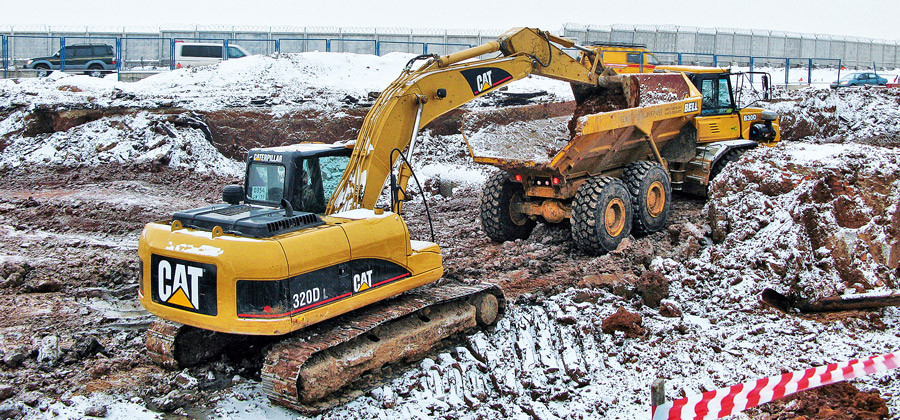 When conducting earthwork in winter, it's important to follow these excavator operation rules:
When conducting earthwork in winter, it's important to follow these excavator operation rules:
- Equipment warm-up before work — minimum 30 minutes for all systems
- Using winter fuel and oil grades with low freezing temperature
- Reduced work shift to 6 hours at temperatures below -20°C
- 20-30% increase in excavator fuel consumption in cold weather
Following these recommendations ensures reliable equipment operation and personnel safety.
Practical experience: "In winter 2022, we worked on a site in Minnesota at -25°C, performing excavation digging for foundation. We used a Komatsu PC200 crawler excavator with an arctic package. Preliminary soil heating with steam units took 3 days but allowed us to perform soil excavation with the excavator without delays. Additional costs were $4,500, but we stayed on schedule and avoided downtime penalties of $1,000/day," — Robert Johnson, foreman at Northern Construction.
Technology for various foundation work types
Foundation digging with an excavator requires following a specific work sequence for foundation construction. Here's the optimal action order for various types of earthwork:
Excavation digging for foundation
When developing excavation, it's important to consider soil types for foundation and foundation depth. For strip foundation, standard trench width equals foundation width plus 0.6-1 meter for convenient formwork installation and foundation reinforcement.
Work sequence includes:
- Marking future excavation contour accounting for slopes
- Layer-by-layer soil removal with depth control
- Forming slopes at safe angle
- Excavation bottom leveling with ±5 cm accuracy
- Sand cushion installation under foundation
Trench digging technology with excavator for foundation
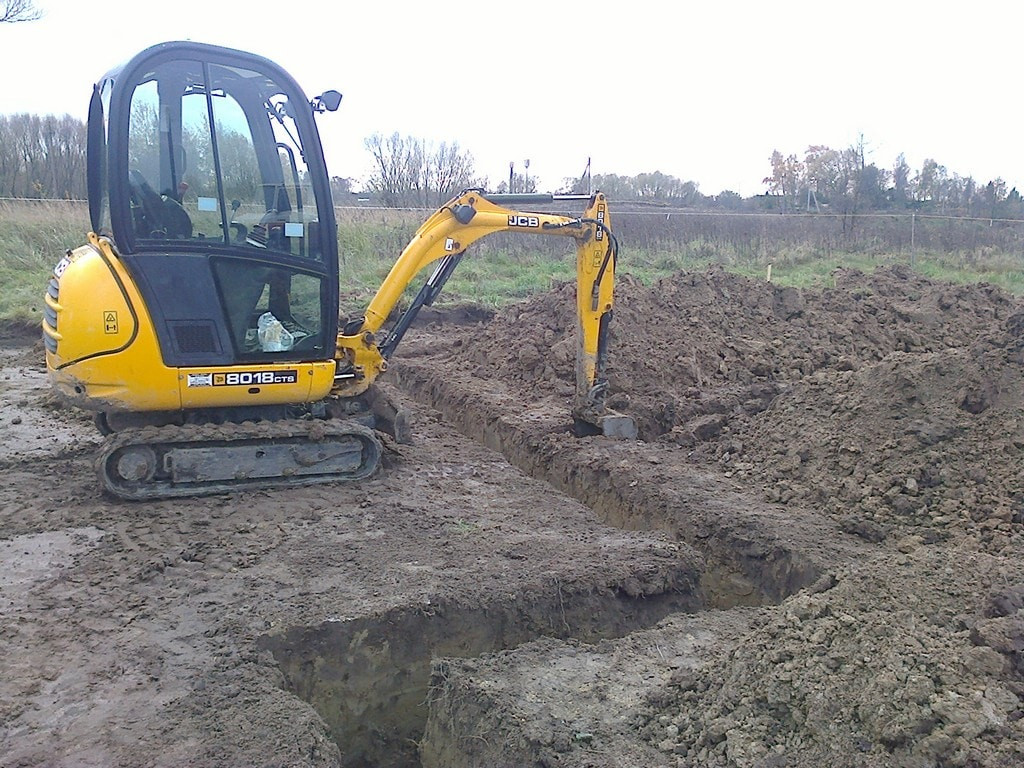 When performing trench digging with an excavator for various foundation types, consider the specifics of each option:
When performing trench digging with an excavator for various foundation types, consider the specifics of each option:
- Strip foundation — trenches 0.5-1.2 m wide, depth according to project
- Pile foundation — point excavations or pilot holes for pile driving
- Monolithic slab — continuous excavation across the entire building area with 0.5-1 m margin
After soil removal, drainage installation, foundation waterproofing, and subsequent foundation concreting are performed.
Depth and accuracy control
Modern excavator technical specifications allow achieving high work accuracy. Hydraulic excavators are equipped with GPS control systems, but experienced operators recommend additionally using a laser level. Digging accuracy should be within ±5 cm of the project mark.
Modern technologies in earthwork
Using GPS navigation and laser control systems significantly increases work accuracy and allows optimizing excavator operation:
- GPS systems — positioning accuracy up to ±2 cm, automatic digging depth control
- Laser levels — real-time horizontal and slope control
- 3D modeling — project loading into onboard computer for process automation
These technologies are especially effective when performing complex excavator work on sites with elevation changes.
From practice: proper work organization and soil stabilization saves up to 25% of time. On a Chicago site, we used a "checkerboard" digging scheme — first selecting every second section, then returning to skipped ones. This avoided wall collapse and accelerated the process by 30%.
Common mistakes in foundation work
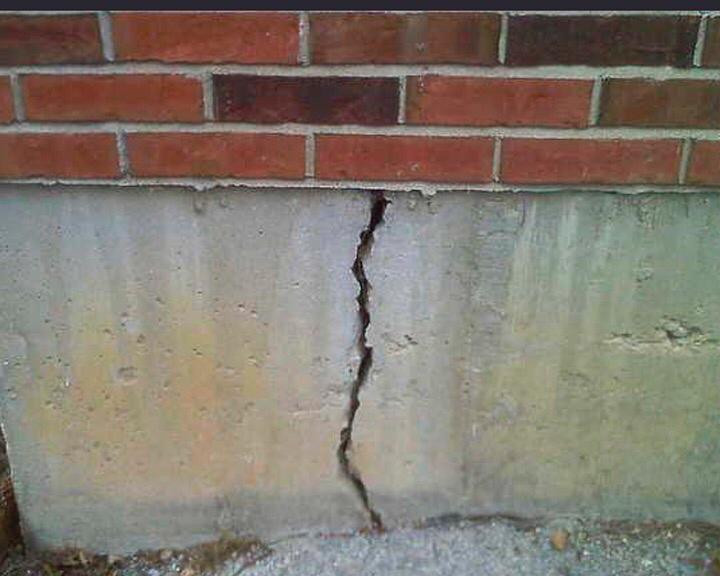 Analysis of over 500 projects revealed the most common mistakes when performing foundation earthwork that lead to cost increases and quality reduction:
Analysis of over 500 projects revealed the most common mistakes when performing foundation earthwork that lead to cost increases and quality reduction:
Planning mistakes
The most critical miscalculations at the project preparation stage include:
- Ignoring geology — lack of surveys leads to incorrect earthwork equipment selection
- Incorrect volume calculation — underestimating excavator bucket volume and number of trips for soil removal
- No time reserve — rigid schedule without accounting for weather conditions and unforeseen situations
These mistakes can increase excavator foundation work costs by 20-40%.
Technical mistakes
Common technical miscalculations when digging foundation with excavator:
- Over-excavation — exceeding digging depth requires additional backfill and soil compaction
- Wrong slope angle — wall collapse risk with steep slopes in loose soils
- Ignoring water drainage — excavation flooding and foundation erosion
Eliminating consequences of such mistakes may require additional excavator rental for foundation.
Organizational mistakes
Work organization problems often lead to downtime and additional costs:
- Unprepared site — equipment downtime due to lack of access roads costs $50-100/hour
- Lack of coordination — misalignment of excavator work with material delivery
- Operator savings — hiring specialists without excavator operation experience
Competent organization allows completing turnkey foundation construction in optimal timeframes.
Safety in foundation work
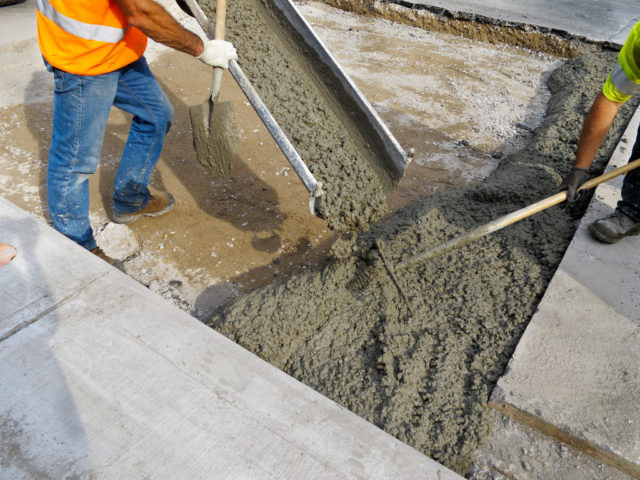 Following safety rules when working with an excavator on site and earthwork safety procedures is not a formality but a necessity. According to OSHA earthwork safety requirements, it's necessary to:
Following safety rules when working with an excavator on site and earthwork safety procedures is not a formality but a necessity. According to OSHA earthwork safety requirements, it's necessary to:
- Remove or reinforce all surface obstacles in the work area before digging begins
- Install excavation barriers at least 1.5 meters from excavation edge
- Ensure wall slope angle according to soil type (from 45° to 80°)
- Check excavation walls before each shift for collapses
- Organize safe descents into excavation every 7.5 meters
Contractor selection and rental conditions
When selecting a company for foundation work or if you plan to order an excavator for foundation, pay attention to the following factors:
- Work experience — minimum 3-5 years in the region with similar projects
- Own equipment availability — reduces schedule disruption risks with rental
- Operator qualification — check documents for excavator rental and operator certificates
- Liability insurance — protection from unforeseen situations at the site
- Reviews and recommendations — request previous client contacts
- Transparent estimate — detailing all work with price indication
Important aspects when renting equipment:
- Minimum excavator order for foundation — usually from 4-8 hours
- Excavator delivery to site — cost $150-300 both ways
- Payment terms — 30-50% prepayment, final settlement after completion
- Excavator rental for excavation — daily or hourly billing possible
Calculation of foundation work cost and time
 For budget planning and determining foundation digging price with excavator, use the following excavator productivity benchmarks for foundation digging:
For budget planning and determining foundation digging price with excavator, use the following excavator productivity benchmarks for foundation digging:
- Mini excavator: 100-150 m³ per shift, $320-440/day
- Medium excavator: 200-400 m³ per shift, $560-880/day
- Large excavator: 500-800 m³ per shift, $800-1200/day
Additional costs include:
- Equipment delivery — $150-300 both ways
- Fuel — calculated based on excavator fuel consumption
- Soil removal — $15-25 per cubic meter depending on distance
Extended saving tips
Besides standard recommendations, there are less obvious ways to reduce foundation earthwork costs:
Logistics optimization
Competent organization of equipment delivery and operation allows significant cost reduction:
- Combined delivery — arrange with neighbors for joint equipment delivery, savings up to $200
- Return loading — use dump truck for soil removal after material delivery
- Local contractors — where to rent an excavator for foundation more profitably within 30 km radius from site
These measures reduce transportation costs by 15-25%.
Alternative solutions
Consider non-standard approaches to work organization:
- Used equipment rental — backhoe loader rental of used equipment cheaper by 20-30%
- Hourly payment vs shift — for small volumes hourly rental more profitable
- Combined approach — combination of mechanized earthwork with manual labor
The right method combination optimizes foundation work price.
Seasonal opportunities
Use seasonal demand fluctuations to get better conditions:
- Off-season — March-April and October-November, up to 15% discounts on excavator services
- Advance booking — equipment order 2-3 weeks ahead gives 5-10% discount
- Long-term rental — when hiring excavator for foundation digging for 5+ days 10-15% discount
Work planning considering seasonality significantly reduces overall costs.
Real case: foundation work optimization
In March 2023, construction company "Midwest Foundations" received an order for foundation installation for a commercial building of 800 m² in Detroit suburbs. Initial estimate was $45,000, but thanks to process optimization managed to reduce costs to $37,000.
Key decisions for soil excavation optimization with excavator:
- Equipment selection — instead of two medium excavators used one large hydraulic excavator Caterpillar 336F with 120 m³/hour productivity
- Work schedule — two-shift work allowed completing excavation digging for foundation in 3 days instead of 7
- Removal optimization — soil was stored on adjacent site for subsequent sale, reducing transportation costs
- Preventive measures — drainage pump installation prevented flooding after rain and maintained work schedule
Result: $8,000 savings, 4-day schedule reduction, no rework. Proper mechanized earthwork organization paid off already at the excavation stage.
Summary: key factors for successful foundation installation with excavator
Foundation work with excavator is a complex process where every detail affects the final result. Main success factors when performing foundation earthwork:
- Thorough preparation — 70% of success is laid at planning stage and selecting appropriate earthwork equipment
- Correct equipment selection — matching excavator technical specifications to work conditions and soil type
- Quality control — constant monitoring of digging depth and technology compliance
- Safety — strict adherence to earthwork safety rules
- Flexibility — readiness to adapt to changing conditions and foundation soil types
Remember: investments in quality preparation and professional foundation work execution using modern excavator pay off with building reliability for decades ahead. Don't save on foundation — it's your project's foundation in literal and figurative sense. Properly organized earthwork with competent excavator operation guarantees successful turnkey foundation construction.

